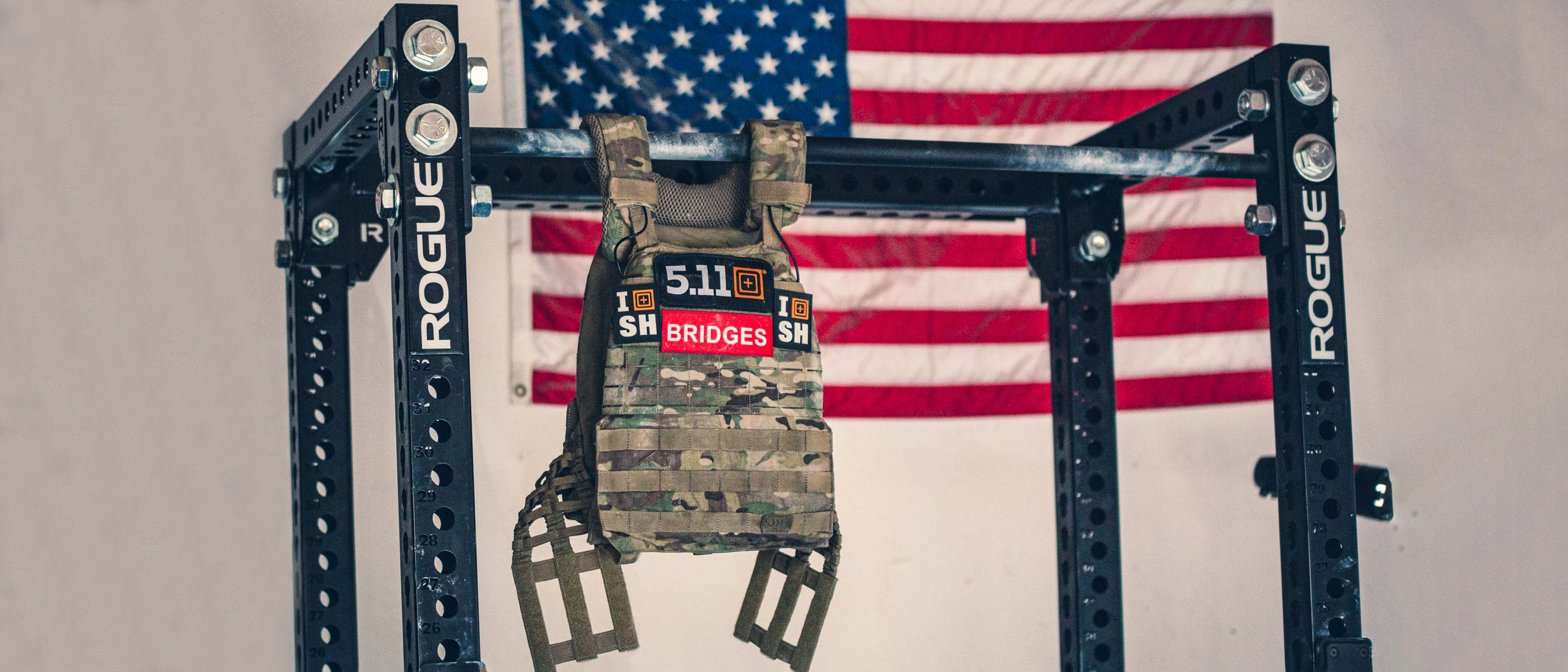Tom's Guide Verdict
The 5.11 Tactical TacTec Plate Carrier looks and feels like repurposed military gear, but it's also a super-effective workout tool.
Pros
- +
Adjustable design fits every body
- +
Super-durable construction
- +
Multiple weight options let you meet your level of fitness
- +
Versatile features let you add accessories and customizations
Cons
- -
Expensive for a single piece of workout gear
- -
Tactical features are useless in a fitness context
Why you can trust Tom's Guide
If you're interested in adding a weight vest to your workout routines, you've probably heard of the 5.11 Tactical TacTec Plate Carrier. As the official weight vest of the CrossFit Games for several years running, it's hugely popular — but it's also really expensive. And it's far from the only option on the market.
5.11 Tactical sent us two different weight vests to test, the 5.11 TacTec Plate Carrier, which we're reviewing here, and the newer 5.11 TacTec Trainer Weight Vest, which may not have the same popularity, but is a bit less expensive and has a more fitness-oriented design.
After a few weeks of testing the TacTec Plate Carrier in my workouts, I'm sold on the entire weight vest concept. But is the rugged vest really the best option for your home workouts? Read our full 5.11 Tactical TacTec Plate Carrier weight vest review to see what we liked, and what we didn't.
5.11 TacTec Plate Carrier: Price and availability
The 5.11 TacTec Plate Carrier is sold through a number of retailers, including Rogue Fitness, Dick's Sporting Goods and Adorama, as well as a huge number of tactical supply outlets. With a list price of $220, it's definitely one of the more expensive weight vests out there, but it's got a rock solid reputation among both professionals — both the physical fitness and police and military types.
The TacTec Plate Carrier comes in four colors:
- Ranger Green
- Black
- Storm Grey
- Kangaroo Brown
The vest can be used with a variety of weights, but our review sample came with the 5.11 TacTec Weight Plate Sandbag, a set of fillable sandbags that fit into the Plate Carrier and have the same overall profile as a metal weight plate. A set of two costs $50, bring the total cost of our vest setup to $260.
For a sleeker, more fitness-oriented take on the plate carrier design, check out our review of the 5.11 Tactical TacTec Trainer weight vest.
Get instant access to breaking news, the hottest reviews, great deals and helpful tips.
5.11 TacTec Plate Carrier: Design
The TacTec Plate Carrier is, first and foremost, tactical combat gear. Not "combat gear inspired" and not "tactical" in the sense that it comes in black and lets you attach a carabiner or two, but legitimate military and police gear worn in the line of duty. But, by swapping out ballistics-rated armor plates for heavy weights, the same plate carrier works as an excellent piece of fitness gear.
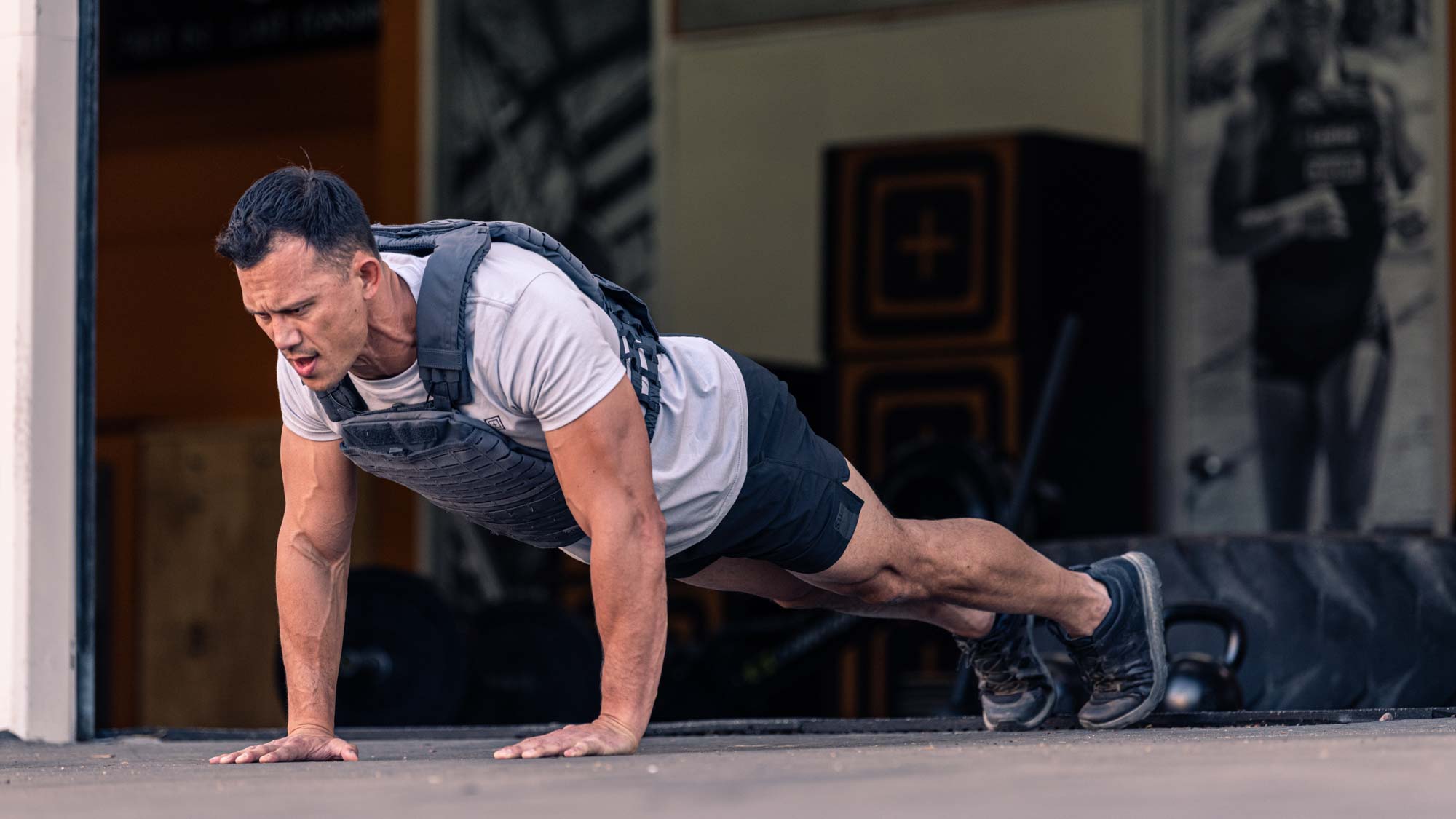
The combat gear aesthetic will be a selling point for some, and off-putting to others, but there is an undeniable ruggedness to the vest design. The 600D polyester used in the vest's construction will stand up to all sorts of abuse, and the various hook and loop closures and padded straps and torso panels manage to balance comfort and functionality.
The military features offer some customization and holds everything securely in place, with plenty of adjustment and features like MOLLE webbing for attaching accessories, such as a hydration pack or water bottle holder.
In other instances, that military design means there are features that the average fitness user will never need, like a grab-and-drag handle in the back of the vest, and an emergency quick release handle in the front that pulls apart the cable that holds the front and back halves of the vest together. It's the sort of thing that may be useful for SWAT team members in crisis situations, but adds nothing useful for home or gym workouts.
The vest features webbing attachment on front and back, along with a laser cut attachment panel that works with any Velcro-like material as well as strap-attached gear.
5.11 TacTec Plate Carrier: Setup
Loading this thing is the first challenge you'll run into before you ever start your workout.
Because it's designed as much for genuine tactical use in combat as it is for your next WOD, it's super secure. Perhaps too much for regular working out. There are overlapping velcro flaps on the front and back panels of the vest. Open those up and you'll find the interior pockets for the weight plates, in our case the sand filled weight plate replacement sandbag.
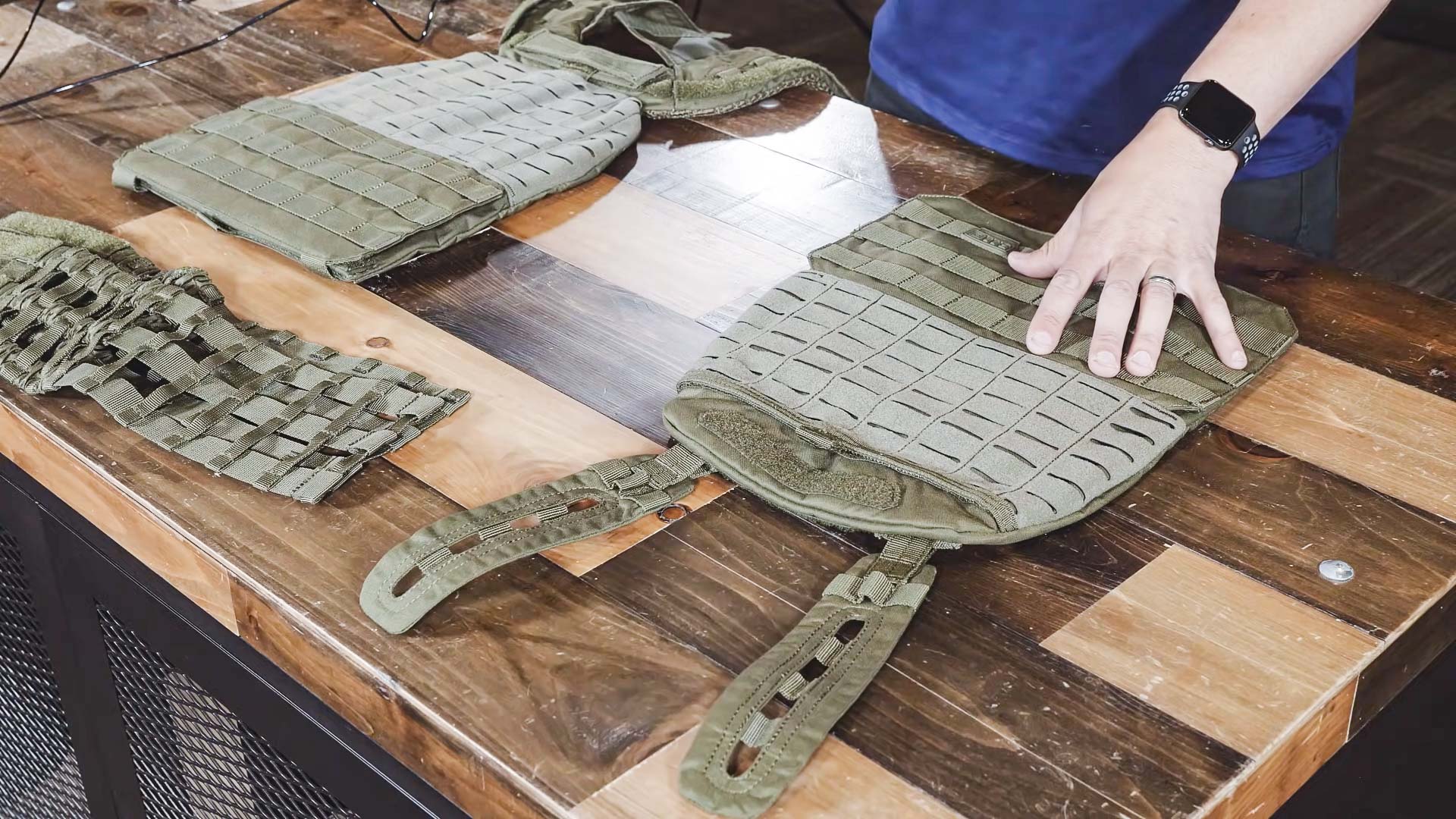
But inside each weight pocket you'll find more velcro, with two sets of internal straps in each pocket. At first glance it's a tangle of nylon webbing and hook and loop material, and it's a little confusing as you're trying to get everything separate and out of the way so that you can put in the weight plate.
After a little examination, I realized that there are two sets of straps, a pair of lateral straps and another pair of horizontal strips. These work in conjunction, sticking to each other with velcro, and then securing inside the plate pocket with yet more velcro.
Once the plate is seated in the pocket, you can cinch down the lateral and horizontal straps, velcroing them to each other to secure them, and then sticking them to the interior velcro of the pocket to further secure the plate. Like I said, it's a lot. It makes sense when you're talking about body armor for the SWAT team, maybe not so much for someone looking to go for a jog.
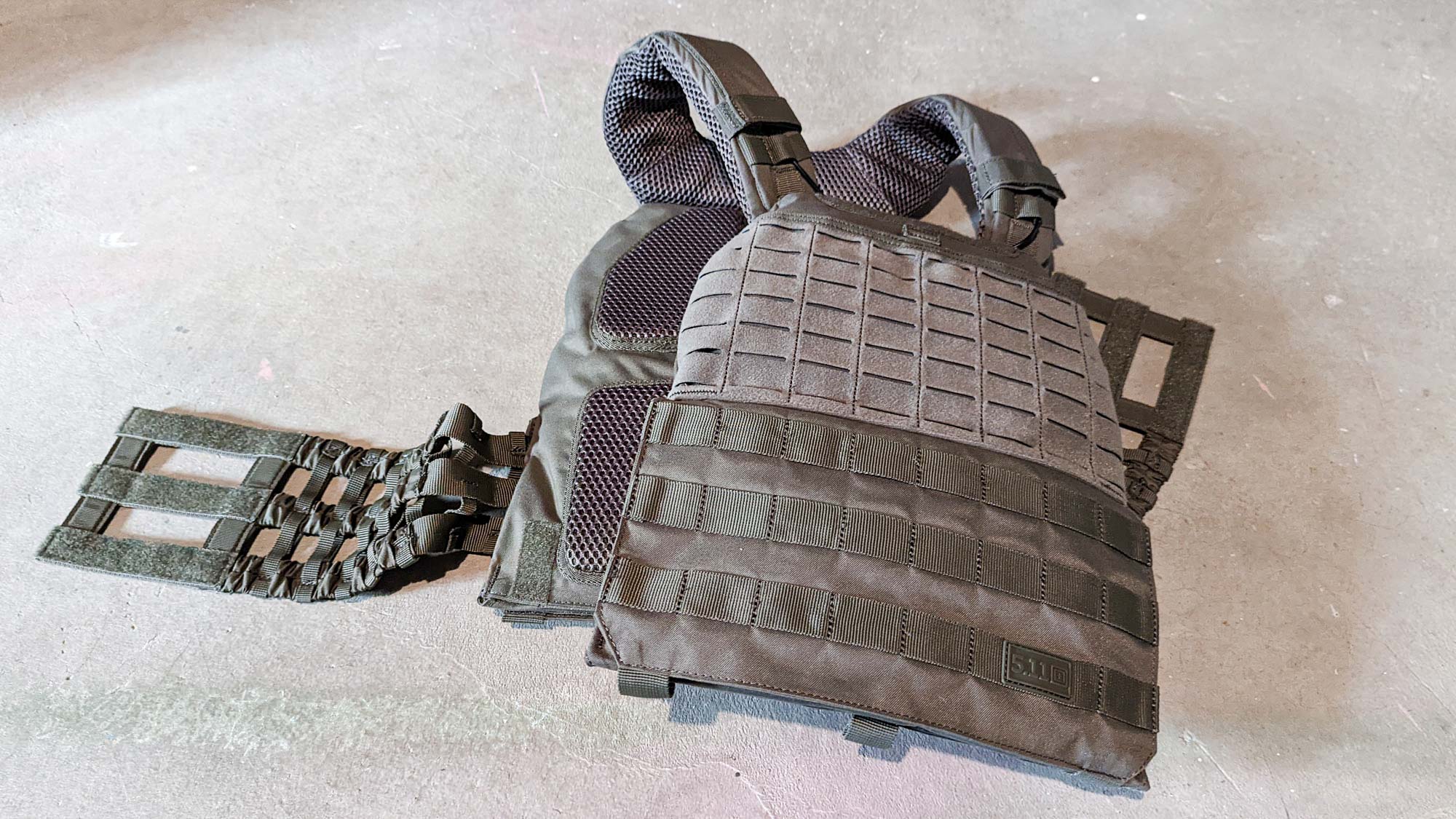
The good news is that once the weight is situated in the vest, and fully secured with the various straps and flaps, it should be relatively maintenance free. Unless you want to adjust the weight in the vest, you could just leave it fully loaded, ready and waiting for your next workout.
5.11 TacTec Plate Carrier: Fit and adjustment
The plate carrier is worn just like body armor, it goes over the head, bib style, with two shoulder straps. The sides are secured with a heavy duty elastic cummerbund, a wide waistband that secures in the front with hook and loop. This is then further secured with a big hook and loop flap that holds down the cumberbund ends, keeping everything snug and secure.
The design is literally battle tested, and does a very good job of distributing the weight and allowing you to wear it as tight or loose as you prefer. In addition to waist adjustment, you can also change the shoulder strap length for a tighter or looser fit up top.
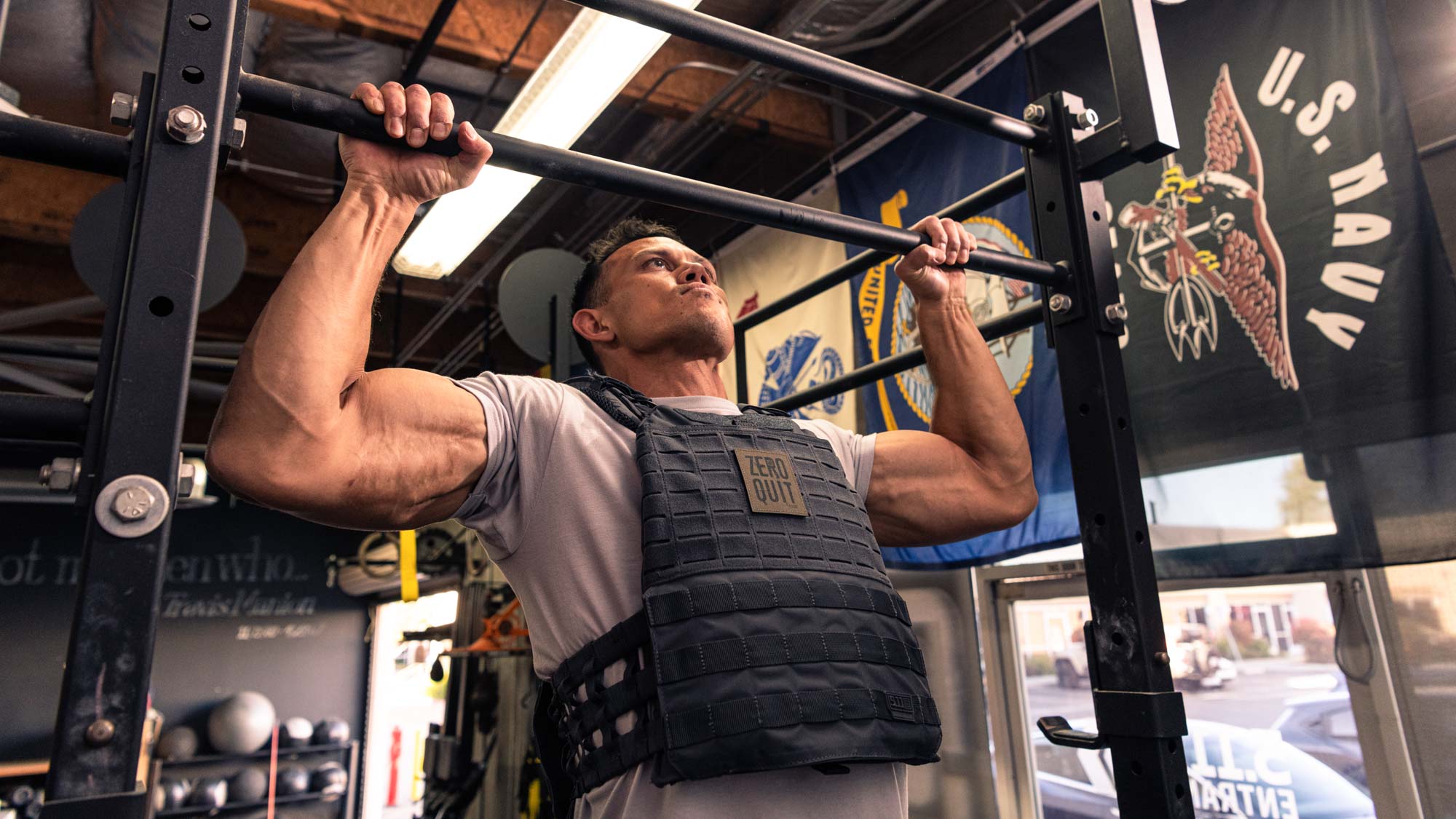
With padded straps, stretchy elastic and layered fastener panels keeping everything snug, the vest does a great job of holding everything as tightly to the torso as you want, while still giving you breathing room — a literal issue in this case, especially when you have a 10 pound sandbag strapped to your chest.
Adjusting the shoulder straps and cumberbund waist band is also a bit of a process. Since the vest uses an internal cable to hold the two halves of the vest together, you actually need to pull the vest apart before resizing anything. 5.11 has a helpful YouTube video to walk you through the process, but the whole thing is pretty involved. The good news is that you won't likely need to adjust the vest fit more than once.
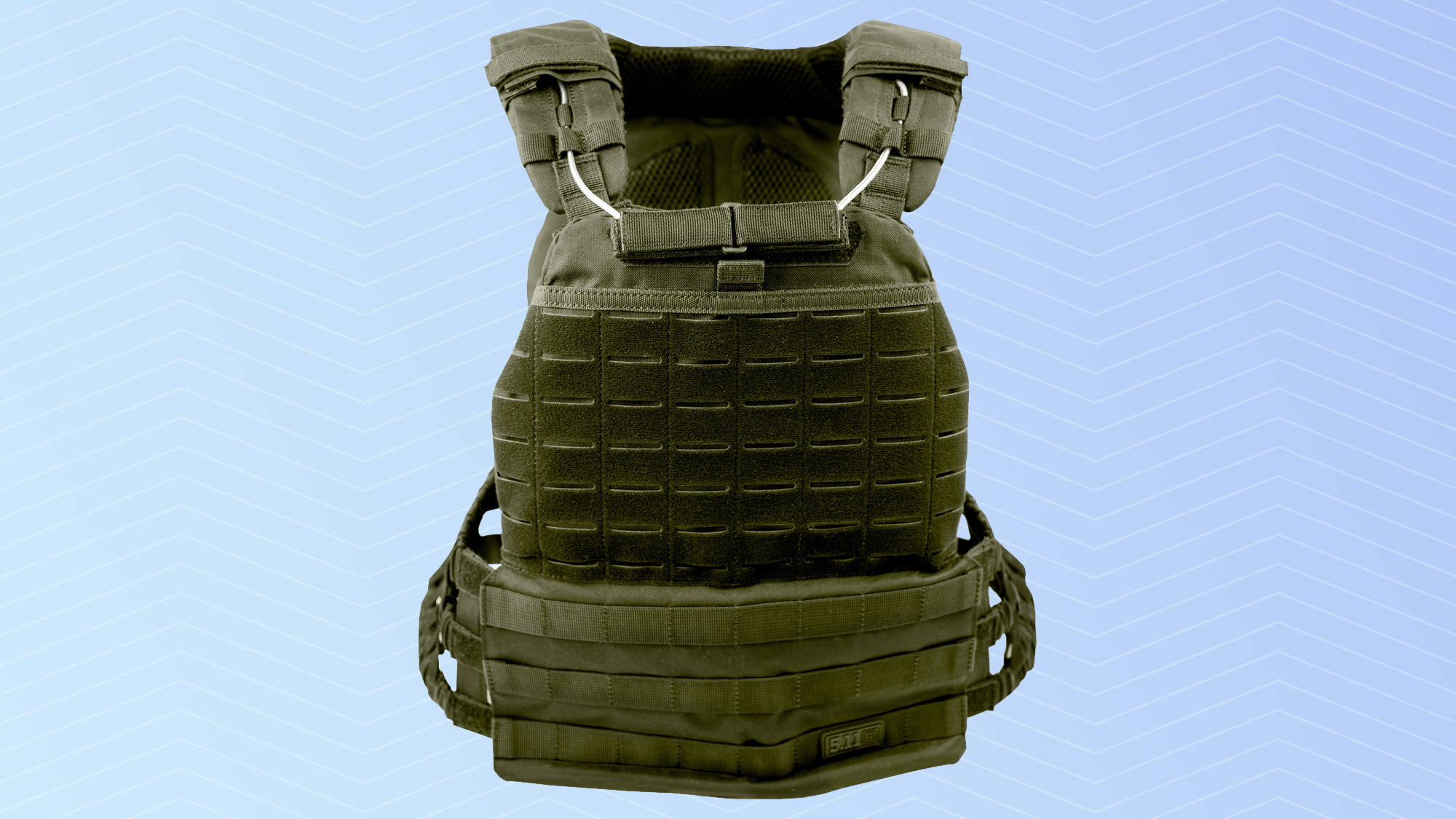
Loading the vest with weight is also a little complicated. The front and back panels of the vest are compartments that can be filled with several types of weight, from specialty weight plates to standard barbell plates, or (in the case of our review sample) a sandbag.
The front and back plate compartments are secured with Velcro along the bottom of the edge, but inside there are two L-shaped straps to hold the plate or sandbag weight in place. Between the compartment closure, the straps and the adjustments on the sandbag weights that we were provided with, there's a lot of Velcro to manage when you put weight in the vest. Be ready to have the various bits of Velcro sticking to the wrong thing a few times while you get the vest loaded the first time.
Once the weight is secured with the L-shaped straps — which hold the plate in position both vertically and horizontally — it's a pretty snug hold, so the weight doesn't shift.
5.11 TacTec Plate Carrier: Weight
For our review, 5.11 sent us the TacTec Weight Plate Sandbag, which is designed specifically for use with the vest. Filled with sand they let you load up the vest to 20 pounds of total weight, but they're easier to ship than traditional steel plates.
Selling for $50 for a set of two, they're also significantly cheaper than either the laser cut steel or cast metal used in other weight options. However, because they don't come with sand, the sandbag option is a little more labor intensive to set up.
The sandbags are made of the same 600D polyester fabric that the vest is made of, with a heavy duty hook and loop closure on one edge and hook and loop straps that tighten down to remove any excess slack once the bag is filled to the desired weight.
The fabric is backed by rigid plastic boards to retain the correct shape. It not only prevents bulging, it also helps the bags maintain rigidity while loading the vest and working out. The bag itself has a bifurcated, two-compartment design, which helps spread the sand evenly across the vest, minimizing any shifting or bulging from settling sand after the bag is full.
A rolled hook and loop enclosure at the bottom of the sandbag does a surprisingly good job of preventing leaks — in my weeks using the sandbag with two different vests, I never noticed any stray sand in the vest, or when switching the weight from one vest to another.

The only issue that the sandbag presents is the need to buy some sand — a 50 pound bag of all purpose sand does the trick for about $5 — and the one-time hassle of filling. While a plastic cup and a bathroom scale are really all you need, you will want to take care to make sure that you fill the two compartments of the sandbag evenly. Also, just a tip from someone who's done it, you'll want to fill this outdoors, or put down some sort of a drop cloth, because there is no way to scoop 20 pounds of sand without making a bit of a mess.
I filled the two bags to 8.75 pounds each, for a total of 17.5 pounds. Combined with the weight of the unladen vest, it totals out to 20 pounds of extra weight. This effectively filled the sandbags to maximum volume, so going heavier would require a different fill material, such as BBs.
The filled bag is then cinched tight with the three adjustment flaps. Once it's filled and adjusted the sandbag feels pretty solid, without any of the shifting and unstable load that you might think of with granular fillers like sand.
5.11 TacTec Plate Carrier: Workout
In actual use, the 5.11 Tactical TacTec Plate Carrier is a highly effective piece of equipment, letting you ramp up the intensity of almost any activity. To put the vest through its paces I wore it for a handful of workouts, including a brisk 30-minute walk, a simple calisthenics routine (pushups, squats, pullups), and a HIIT boxing workout with a heavy bag.
The only issues I had were that the vest was a little bulky. And note simply because you use it to strap sandbags to your body, but the straps and cumberbund themselves are chunky, and add some bulk and friction to movements that you might not want.
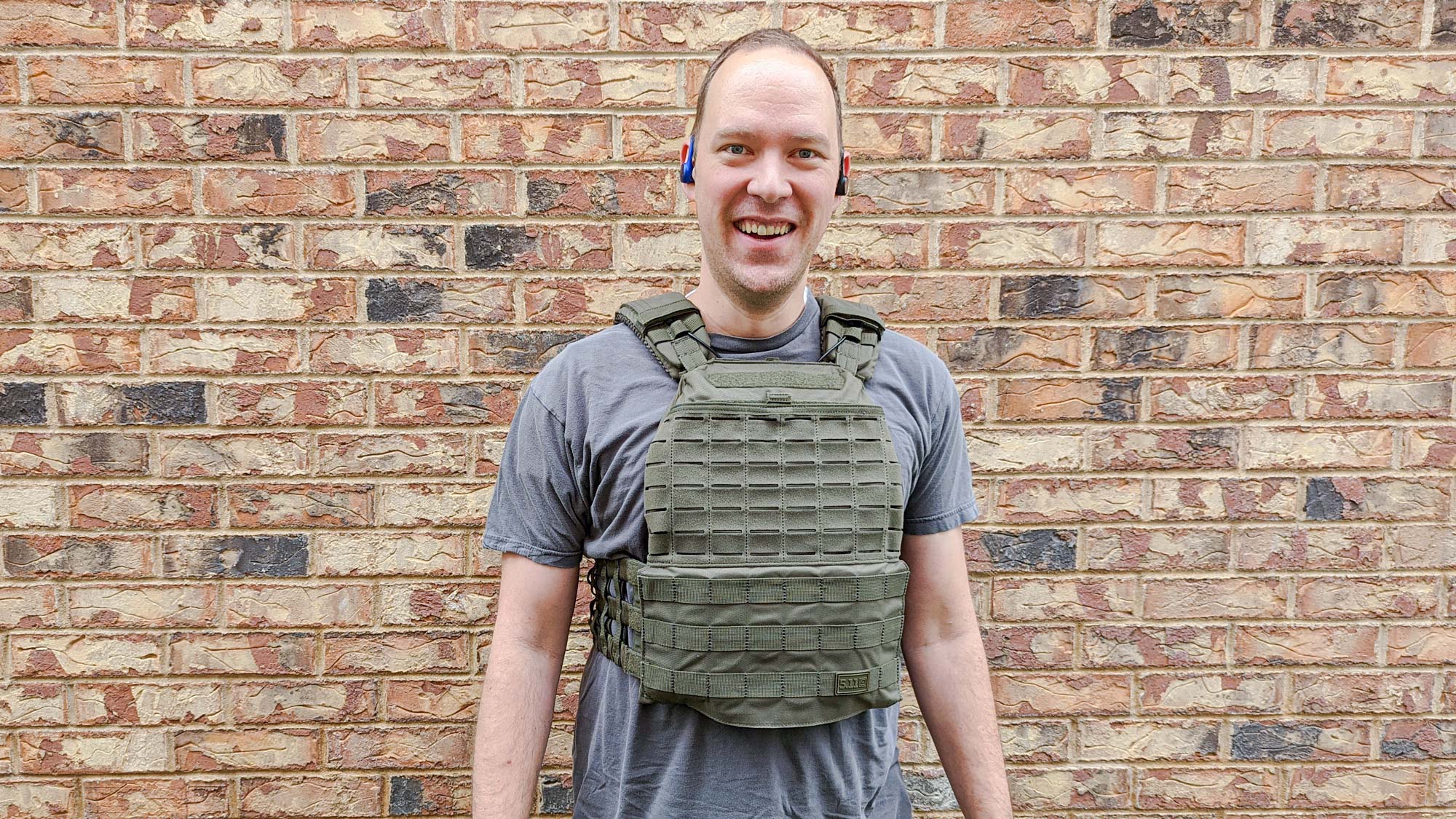
There's an emergency release handle in the front — another one of those features that's more for combat operators than fitness enthusiasts — but the position of the handle is such that it would occasionally rub uncomfortably on my throat and collarbone. Some fine tuning of the straps fixed the issue, but the fact that I had to accommodate a feature I'm not likely to ever use was irritating.
The padded shoulder straps and vest panels kept everything fairly comfortable, but the mesh material used on these padded sections is a bit rough. You'll definitely want to wear a layer under the vest. A T-shirt did the trick just fine, but some customer reviews and user posts online suggest that performance fabrics — think moisture-wicking Under Armour — will actually get damaged by the rough texture.

On the whole, the vest did exactly what I expected it to do. It held the weight securely, leaving me free to worry about my form and focused on grinding out reps instead of being distracted by shifting loads on my chest and back.
5.11 TacTec Plate Carrier: Verdict
The 5.11 TacTec Plate Carrier is considered by many to be the gold standard for weight vests, thanks largely to its prominent use in the CrossFit Games. And it's easy to see why, with serious durability, a wide range of customization options and a design that's both functional and comfortable.
But compared to 5.11's other weight vest, the 5.11 TacTec Trainer, I think this model is a great option, but not the best choice for pure fitness gear. It's more expensive, it's bulkier and more complicated, and there are non-fitness features that simply aren't helpful for non-military users.
Brian Westover is currently Lead Analyst, PCs and Hardware at PCMag. Until recently, however, he was Senior Editor at Tom's Guide, where he led the site's TV coverage for several years, reviewing scores of sets and writing about everything from 8K to HDR to HDMI 2.1. He also put his computing knowledge to good use by reviewing many PCs and Mac devices, and also led our router and home networking coverage. Prior to joining Tom's Guide, he wrote for TopTenReviews and PCMag.
